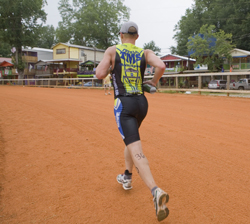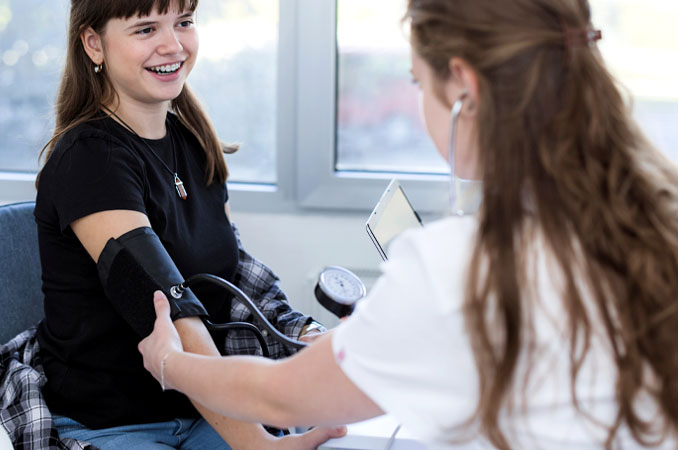Exercise Safely in Hot Weather
When summer hits in Mississippi, we begin to brace for high heat, humidity and heat indices above the century mark. While the warmth is a welcome break after winter, it can also become dangerous as summer rolls on and temperatures climb even higher. With the many summer activities to keep us busy and active, we must be aware of heat safety, especially when exercising outdoors.
Outdoor exercise in high heat and humidity poses certain health risks which should always be taken seriously. Exercise in the heat puts extra stress on your cardiovascular system and increases your core body temperature. To help combat the heat, more blood circulates through the skin, which leaves less blood available for your muscles and increases your heart rate. High humidity creates additional stress because sweat cannot evaporate as readily, causing your body temperature to increase even more. In fair weather and under normal conditions, our body’s cooling system works to adjust to external temperatures. But with extended exposure to heat and humidity, especially during strenuous exercise, we become more likely to develop cramps, heat exhaustion and heatstroke.
Here are some tips to help you stay cool this summer when your activities take you outdoors:
Take it easy. If you normally exercise indoors, keep it moderate when you take things outdoors. As you adapt to the heat, you can increase your intensity slightly and increase the length.
Hydrate well. Your internal cooling system depends on adequate hydration – and rehydration during exercise. As a general rule of thumb, you should drink 15-20 fluid ounces of water within 2-3 hours prior to exercise and another 8-10 fl. oz. within 10-15 minutes prior. During exercise, you should have 8-10 fl. oz every 10-15 minutes. If you are exercising longer than 90 minutes, you should drink a sports drink (with no more than 8 percent carbohydrate) every 15-30 minutes. You should weigh yourself before and after exercise and replenish fluid appropriately. For every one pound lost, drink 20-24 ounces of water. Another way to monitor your fluids is to measure urine output and monitor the color. The clearer it is, the more hydrated you are.
Dress down. Loose, lightweight clothing is key during exercise in high heat. This helps sweat evaporate more readily and helps cool your body since it has more access to air. Moisture-wicking material also can keep excess sweat off your body.
Avoid mid-day heat. Always try to avoid exercising during the hottest part of the day. Early morning or evening exercise is a better option since it will likely be somewhat cooler.
Screen yourself. Sunscreen is a must since sunburn is not only painful, but also decreases the body’s ability to cool itself.
Stay inside. While this is probably your best plan for staying cool when the mercury rises, avoiding the outdoors entirely may not be an option. However, if your activities permit, take things inside where it’s cooler. A local gym, mall, stairs in an air-conditioned building and even a swimming pool are great places to be active.
If you or someone else seems to be having trouble during outdoor activities, it is important to get out of the heat and seek help. Drink plenty of water and cool off. If symptoms do not improve within 60 minutes, or if a fever of 102 degrees is present, seek immediate medical attention. Here are signs and symptoms of heat-related illnesses:
Heat Exhaustion
 Cool, moist skin with goose bumps when in the heat
Cool, moist skin with goose bumps when in the heat
Heavy sweating
Headache
Dizziness or Faintness
Fatigue
Muscle cramps
Nausea or vomiting
Rapid heartbeat
Heat Stroke
High body temperature (104 degrees or higher)
Lack of sweating (skin feels hot and dry)
Flushed skin
Rapid breathing
Rapid heartbeat
Weakness
Headache
Dizziness or hallucinations
Muscle cramps
We encourage everyone to be active – but play it safe and don’t risk your health.




 Women's Health
Women's Health Eat Healthy
Eat Healthy Exercise
Exercise Health & Wellness Articles
Health & Wellness Articles